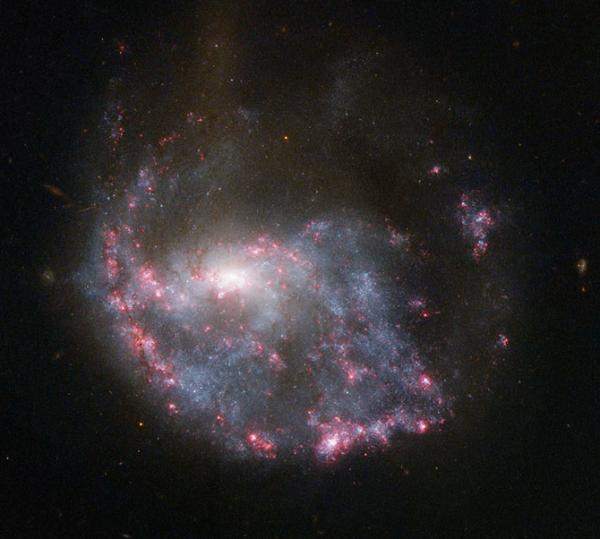All that glitters may not be gold, but galaxy ESO 318-13 is nonetheless very impressive indeed.
Despite being located millions of light-years from Earth, the stars captured in this image are so bright and clear one could almost attempt to count them.

Although ESO 318-13 is the primary focus of the image, it is sandwiched between a vast collection of bright celestial objects. Several stars near and far dazzle in comparison to the neat dusting contained within the galaxy.
One that particularly stands out is located near the center of the image and looks to be an extremely bright star located within the galaxy. This is, however, says NASA, simply “a trick of perspective.” To be sure, the star is located in the Milky Way, our own galaxy, and it shines so brightly because it is so much closer to us than ESO 318-13.
There are also a number of tiny glowing disks scattered throughout the frame that are more distant galaxies. In the top right corner, for example an elliptical galaxy can be clearly seen, a galaxy which is much larger but more distant than ESO 318-13. More interestingly, peeking through the ESO 318-13, near the right-hand edge of the image, is a distant spiral galaxy.
Galaxies are largely made up of empty space; the stars within them only take up a small volume, and providing a galaxy is not too dusty, it can be largely transparent to light coming from the background. This makes overlapping galaxies like these quite common.

In other Hubble news, NASA’s space telescope recently managed to capture a stunning image of NGC 922, which can best be described as a bright pink nebulae almost completely encircling a spiral galaxy.
The ring structure and the galaxy¹s distorted spiral shape result from a smaller galaxy scoring a cosmic bulls-eye, hitting the center of NGC 922 some 330 million years ago.






